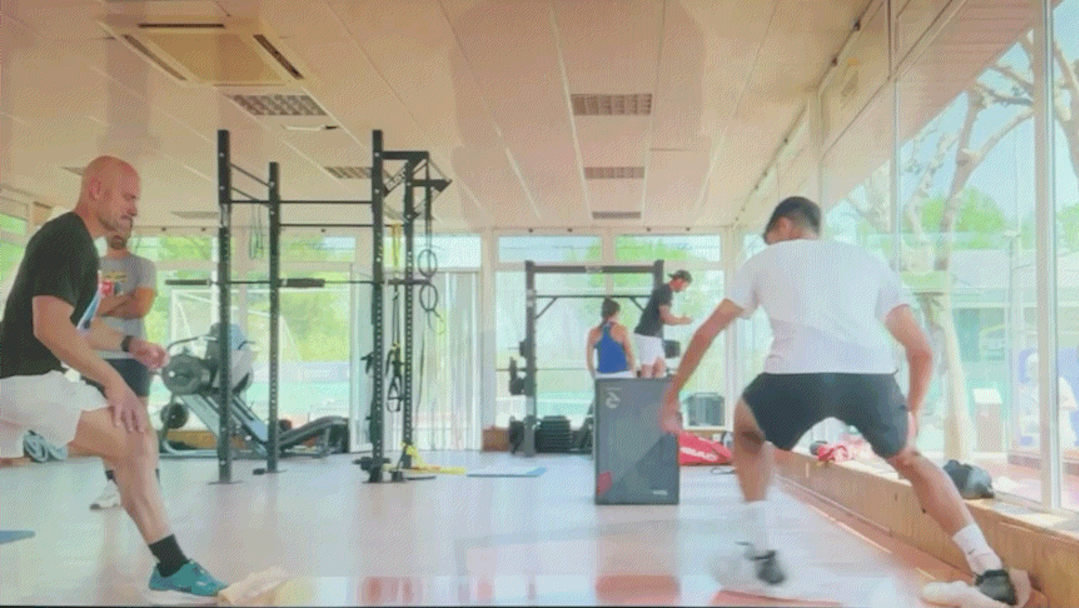I generally work under the basic assumption that any exercise the top professional tennis players are seen performing is beneficial for tennis. Such is certainly the case with Carlos Alcaraz, who is one of the most bankable rising stars in the game. With a team of highly skilled coaches, trainers, and physios behind him, I believe every aspect of his training is intentional and optimized for peak performance. When a player of his caliber incorporates a specific movement into an exercise routine, it’s a strong indicator that it supports strength, mobility, or injury prevention in a way that directly impacts on-court performance.
This week’s featured training technique is once again gleaned from the Netflix docuseries Carlos Alcaraz: My Way. My problem is that I have no idea what to call this exercise, and have found no evidence that it is in widespread usage based on an exhaustive search of internet resources. I hope someone can point me to a credible source for both nomenclature and descriptions. The remainder of this post is pure speculation on my part.

I am writing about it and describing it in the hope that someone else can help me out by pointing me to a credible source for this exercise.
The first aspect of the move is a reverse lunge holding a resisted overhead press. Alcaraz grips a resistance band in one hand that is anchored behind him and then (mostly) holds that arm up vertically overhead while he performs a reverse lunge. The reverse lunge builds strength, balance, and control in a way that mirrors tennis movement. It targets the glutes and hamstrings, protects the knees, and improves core and hip stability. The reverse lunge is a staple of tennis training.
What truly makes this combination exercise unique is the arm motion Alcaraz performs as he drives his body down and back up to the starting position. Though I do not know what that movement is officially called, I would describe it as a one-armed high-to-low wood chop. This seems intuitively good for tennis since it mimics the path of the racquet when serving. I think this exercise develops shoulder stability and range of motion while priming the muscles that propel the body upward as the arm moves through the service follow-through.
The integration of this high-to-low movement with a reverse lunge creates a multi-plane exercise that challenges both strength and coordination. It appears to activate the kinetic chain in a way that closely resembles the mechanics of the tennis serve. It builds the capacity for driving upward with the legs, engaging the core, and transferring energy through the shoulder and arm. The unilateral resistance likely adds an element of rotational core training, which is crucial for injury prevention and maintaining balance during explosive movements on the court.
It’s also worth noting that despite the explosive aspects, Alcaraz’s motion is both controlled and deliberate. He isn’t racing through the reps for volume or cardio. Instead, he’s focusing on precise alignment, tempo, and range of motion. That’s a good reminder that exercises like this aren’t just about raw strength. They’re also about control and good form.
If anyone reading this has insight into what this exercise is officially called, or can point me toward a description from a strength coach or physiotherapist, I would love to hear from you. Until then, I’ll call it the “Alcaraz One Arm Overhead Chop with Reverse Lunge” and file it under exercises that probably make you better at tennis, even though I don’t know what it’s called or the precise benefits.



